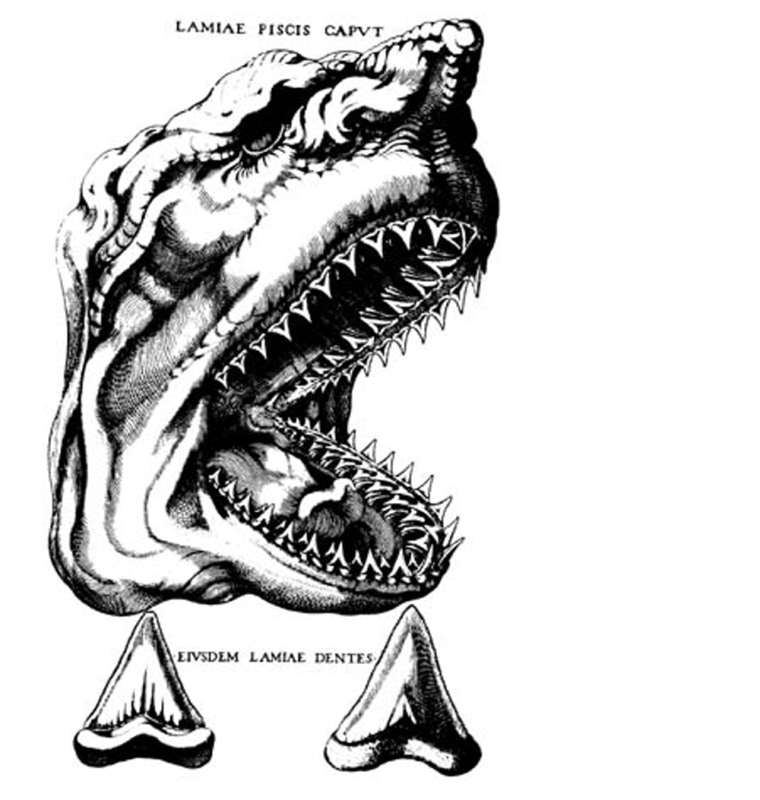A 10-million-year-old nursery for the extinct megalodon shark has just been found in Panama, according to University of Florida researchers who report their findings in the latest issue of the journal PLoS ONE.
Megalodon, aka "Big Tooth," is thought to have been the world's largest fish and shark. It grew to around 67 feet in length and looked like a heftier great white shark.
“The study provides evidence of megalodon behavior in the fossil record,” said lead author Catalina Pimiento, who just completed a master’s degree in zoology from UF and worked in the Florida Museum of Natural History’s vertebrate paleontology division. “Behavior doesn’t fossilize, but we were able to interpret ancient protection strategies used by extinct sharks based on the fossil record.”
Prior suggested fossil shark paleo-nursery areas, the Paleocene Williamsburg Formation and late Oligocene Chandler Bridge Formation of South Carolina, were based only on the anecdotal presence of juvenile teeth accompanied by marine mammals.
“Neither of the collections from previously suggested nursery grounds has been as rigorously analyzed as the specimens in this study, which better supports the presence of this paleo-nursery area,” Pimiento said. She discussed her preliminary findings with Discovery News back in September.
For this latest study, she and her team collected 400 fossil shark teeth between 2007 and 2009 from the shallow marine Gatun Formation, which connected the Pacific Ocean and the Caribbean Sea during the late Miocene Epoch in Panama. Most of the 28 Carcharocles megalodon specimens were surprisingly small, Pimiento said. Further analysis determined the size did not relate to tooth position in the jaw or the size of the species during the late Miocene.
(University of Florida vertebrate paleontology graduate student Dana Ehret measures a juvenile megalodon tooth from the Gatun Formation, Panama, at the Florida Museum of Natural History on the UF campus May 6. Ehret is a co-author of the study that describes the first Neotropical megalodon shark nursery. The four teeth pictured on the right are from the Gatun Formation. The tooth on the far left is an adult megalodon tooth from Florida.
“Our study suggests the specimens represe‘nt mostly juveniles with lengths between 2 and 10.5 meters (6.5 to 34.5 feet),” Pimiento said.
Michael Gottfried, associate professor and curator of vertebrate paleontology at Michigan State University Museum, helped review the PLoS ONE article.
"Shark nursery areas are very poorly known, both for living and fossil species," Gottfried said.
"If the teeth from Panama described by Catalina and her collaborators do indeed come from a nursery area for the giant megalodon shark, they have the potential to provide a lot of interesting information on the paleobiology of this enormous, but still very enigmatic, fossil species."
